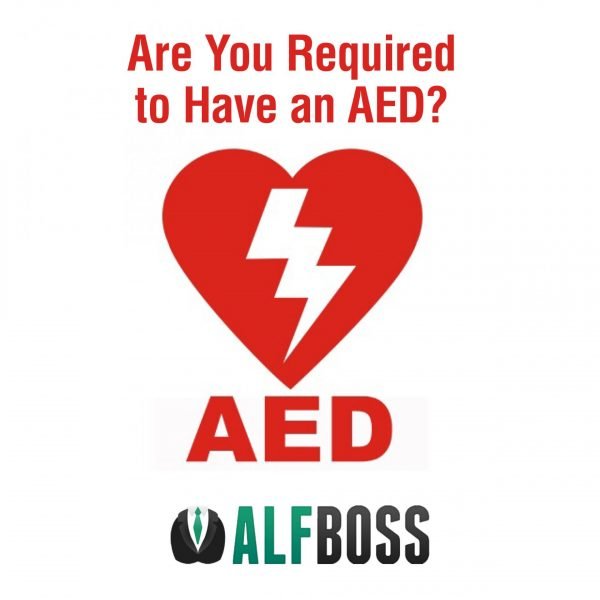
Assisted living facilities with 17 or more beds are required by AHCA to have on the premises at all times a functioning automated external defibrillator. “AED”
Place your AEDs in visible and accessible locations.
Effective Aed programs are designed to deliver a shock to a victim within three to five minutes after the person collapses. use a three-minute response time as a guideline to help you determine how many AED’s you need and where to place them.
Develop a training plan.
AED users should be trained in CPR and the use of an Aed. training in the use
of an Aed can help increase the comfort and confidence level of responders. responders are trained in CPR and the use of an Aed so someone is always available to respond to an emergency.
Raise awareness of the AED program with your staff.
Provide information to staff about the Aed program. Identify where the devices are located. by continually raising awareness of the program, you reinforce to employees that your company or organization is committed to their safety.
Implement an ongoing maintenance routine.
it is important to do a weekly or monthly visual inspection of the Aeds to ensure they are in working order. On average, batteries should be replaced every four years, and pads every two years. the program coordinator or another designated person can do the inspections. This person develops a written checklist to assess the readiness of the Aeds and supplies.
Regulation
Title Use of Personnel; Emergency Care (AED)
Statute or Rule 429.255(3-5) FS
(3)(a) An assisted living facility licensed under this part with 17 or more beds shall have on the premises at all times a functioning automated external defibrillator as defined in s. 768.1325(2)(b).
(b) The facility is encouraged to register the location of each automated external defibrillator with a local emergency medical services medical director.
(c) The provisions of ss. 768.13 and 768.1325 apply to automated external defibrillators within the facility.
(4) Facility staff may withhold or withdraw cardiopulmonary resuscitation or the use of an automated external defibrillator if presented with an order not to resuscitate executed pursuant to s. 401.45. The department shall adopt rules providing for the implementation of such orders. Facility staff and facilities shall not be subject to criminal prosecution or civil liability, nor be considered to have engaged in negligent or unprofessional conduct, for withholding or withdrawing cardiopulmonary resuscitation or use of an automated external defibrillator pursuant to such an order and rules adopted by the department. The absence of an order to resuscitate executed pursuant to s. 401.45 does not preclude a physician from withholding or withdrawing cardiopulmonary resuscitation or use of an automated external defibrillator as otherwise permitted by law.
(5) The Department of Elderly Affairs may adopt rules to implement the provisions of this section relating to the use of an automated external defibrillator.